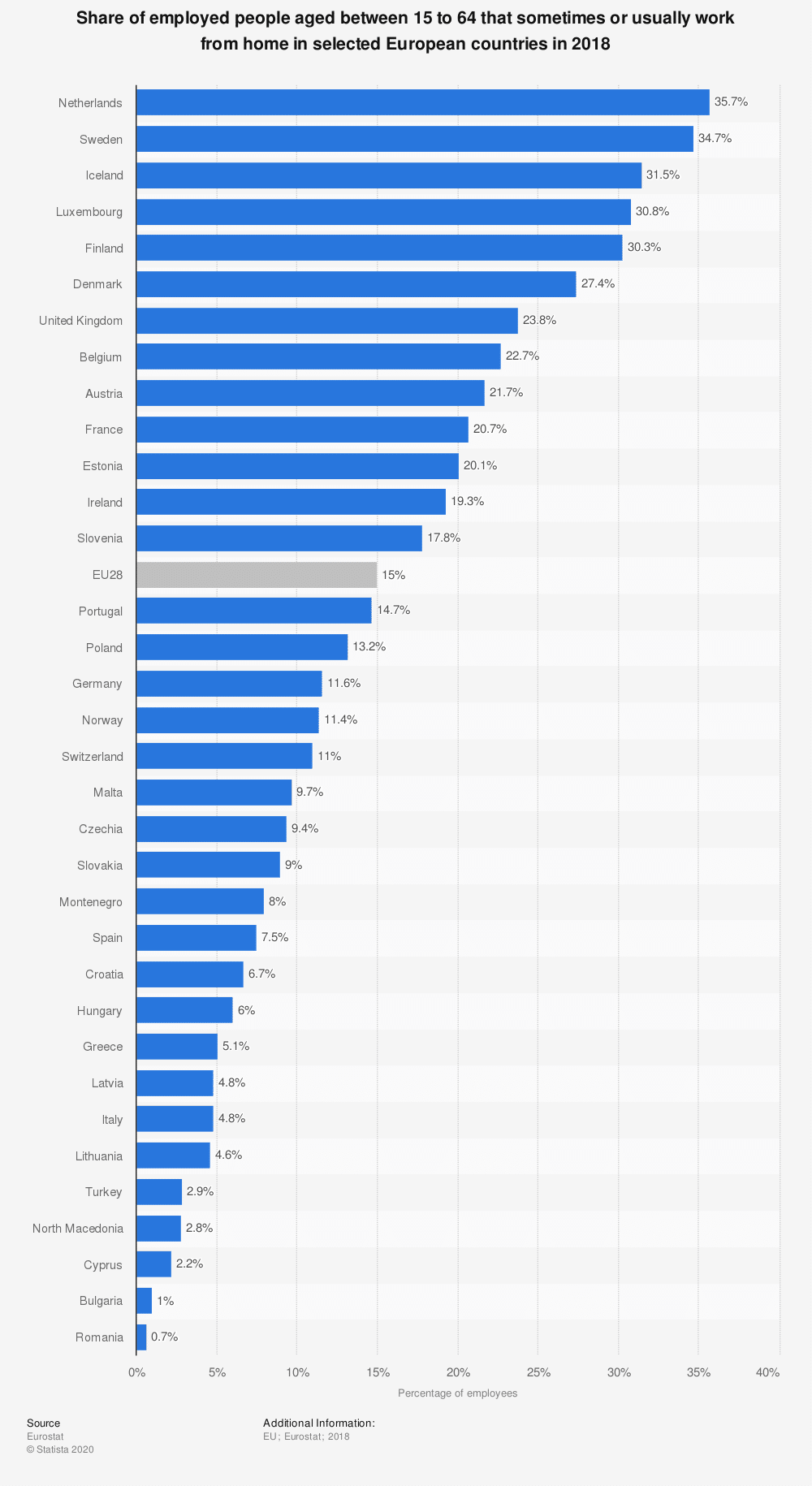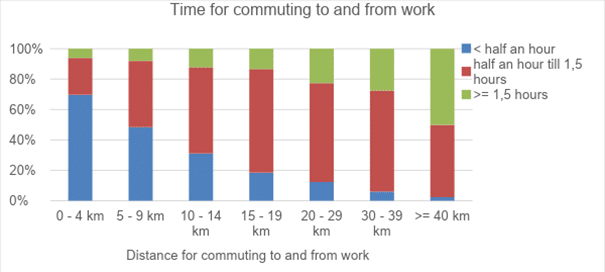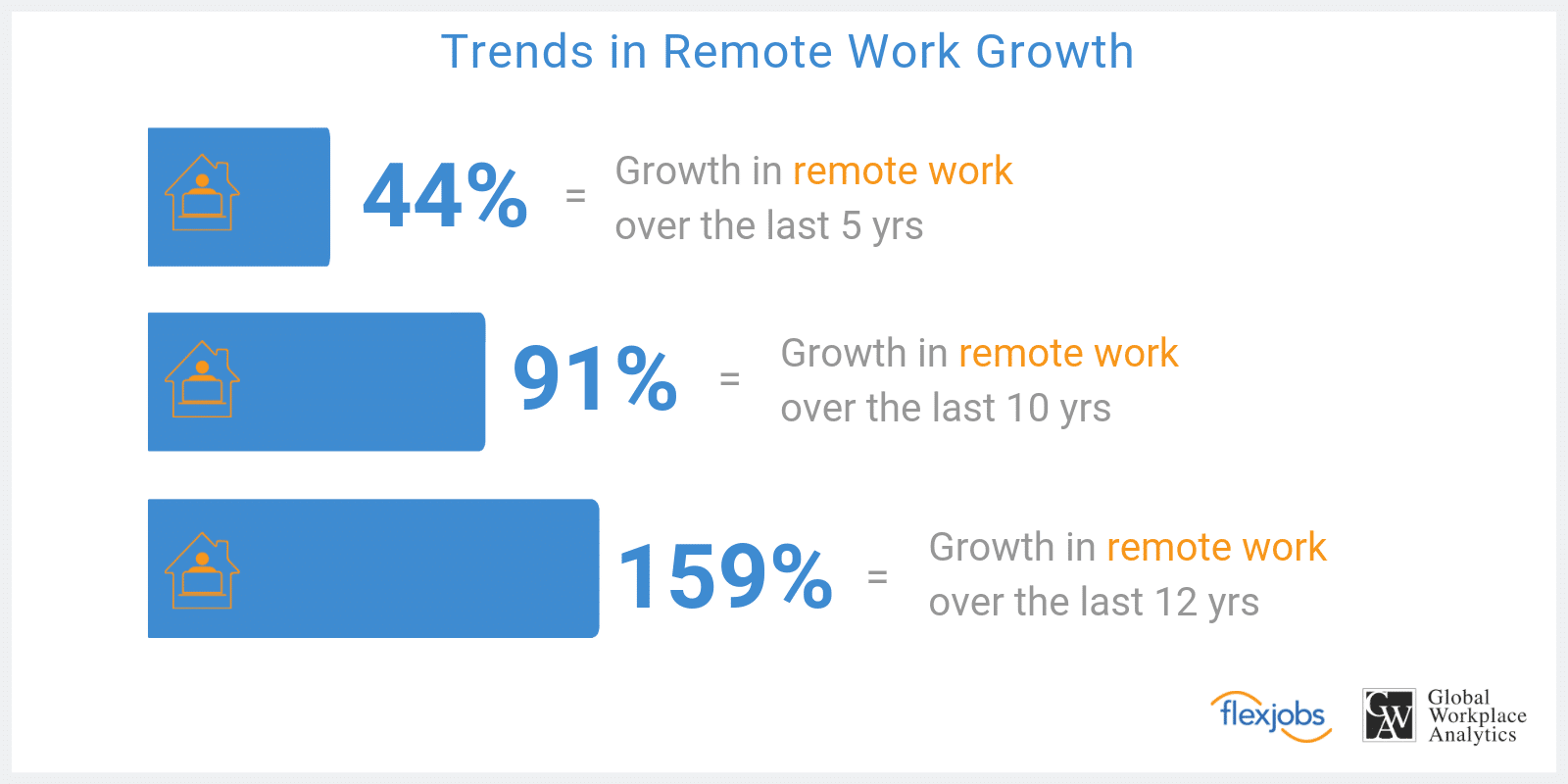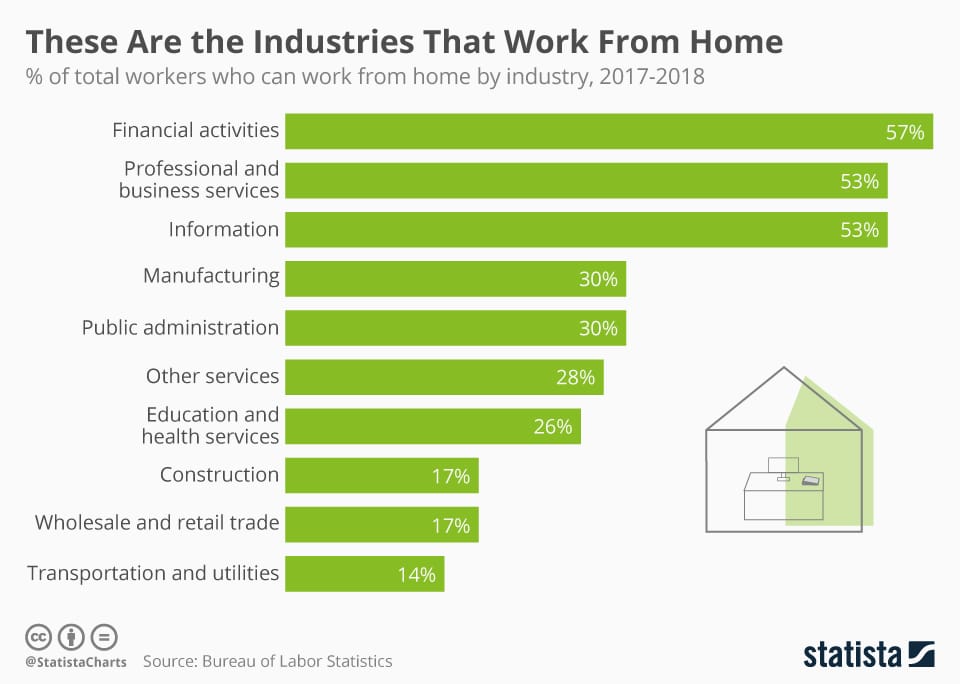Long before people started turning spare bedrooms and idle breakfast nooks into makeshift office spaces, the emergence of the global remote workforce had begun. The mass migration toward working from home, coffee shops or wherever Wi-Fi’s ace had become a reality of the workplace. Then came a global pandemic and suddenly “WFH” was no longer a luxury but a necessity.
Throughout it all, it’s been fascinating to see the world’s organisations adjust to the new norm on the fly.
Now, with social distancing a thing across the globe and the idea of clustering in groups a real concern for the foreseeable future, a trend that was already spiking in popularity across the European Union seems poised to soar in the near future.

Source: Eurostat @ Statista 2020
Regardless of your views on the importance of reporting to an office on a daily basis (imperative for some jobs), the impact of the world’s biggest work-from-home experiment is likely to further cement remote work as a cultural norm around the globe.
So, let’s explore why the remote workforce has been booming — and why it will continue to explode well into the future.
Here are 10 reasons why remote work isn’t going anywhere soon:
1. We are more connected than ever.
The biggest reason remote work works nowadays is because the tools to do it are more sophisticated than ever before. From world-class video conferencing platforms to cloud-computing tools that emulate the office workplace in almost every way, it’s never been easier to communicate with your team from wherever you are — be it home, a coffee shop or nomadically.
Considering “over one-third of workers have responded to the pandemic by shifting to remote work” according to a recent MIT study of over 25,000 American workers, there’s a real belief that a significant chunk of this group could be here to stay.
“Once businesses and individuals invest in the fixed costs of remote work, they may decide to stay with the new methods,” the MIT study reveals. If you’re wondering what that ultimate number could be across the globe, it’s worth considering how many people are currently working from home due to the coronavirus…

It’s a lot.
You might also consider that it’s possible hiring back full-time workers will be slow on the uptick once COVID-19 ends, as a way to reduce risk. This will likely heighten the need for qualified freelance talent to help companies mind the gap remotely.
To that end, having access to a proven global talent network could assist remote teams by creating and managing top-tier content with agility from afar. This would allow them to find not just the best candidate in their local area, but across the world.
2. Tele-commutes are a lot shorter than real commutes.
According to this article and poll by SD Worx, more than 20% of Europeans commuted at least 90 minutes daily (before COVID-19). That’s almost 1.5 hours spent in a car, on a train, or squeezed onto a bus waiting for your job to begin. Sure, some people have the pressure and wherewithal to work on the way to work. But is that time even being figured into your total spend on the job?
Probably not.
If there’s anything the remote work revolution has taught us, it’s that we can win back time in our day — and up the quality of our lives — simply by calling in remotely and connecting with instant message tools such as RingCentral Glip.
Essentially, by doing our face-time online.
This was increasingly popular option before COVID-19, and only looks more appealing post-pandemic, whenever that will be. The problem pre-COVID, according to the same article, was that of the “European workers who had the option of flexible working, 30.7% rarely or never make use of it and 12.7% use it one day or less each month.” That’s bound to change in the short-term at least — and potentially for the long-term as it gets more normalised — so consider getting that home office set up to succeed.

3. Remote workers are more apt to work more hours
Without any real commute (or co-workers popping by your cube to recount their favorite episode of The Great British Bake Off), you might expect the extra 2-3 hours a day the average worker gains back gets put to work. And you would be right.
One study by the Harvard Business Review reported that productivity actually increases when people work-from-away. Namely, their results indicate that “examiners’ work output increased by 4.4% after transition to WFA, with no significant increase in rework.” Meaning? Not only do remote workers gain time back from not having a commute, but they also make good use of it.
4. Better work/life balance awaits.
Think about it: As a full-timer, how many times did you have to conjure up some flimsy “doctor’s appointment” excuse to attend one of your child’s football matches?
You and everyone else.
Most people have had to fib at the office to secure a coveted “get out of work free card.” With remote work, there’s way more flexibility and a better opportunity to achieve greater work/life balance. You might still be working full-time technically, but the whole idea of having to make up some sorry excuse to marvel in your child’s milestones is unnecessary when working remotely.
Whether it’s a child’s commencement or just the ability to work through a homework problem with them instead of trusting the teenage au pair to do it, there are times when intangible value can be won back for your family simply by being at home.
Here are other things you’ll gain more time for:
- Sleep: Without a two-hour commute, there’s more time on the front- and- back-end of your day to win shuteye. And that 30-minute after-lunch siesta? Now, also an option!
- Social life wins: A lunch date in Paris after a morning Chunnel ride, an early evening concert in the park, a mid-week brunch with a friend? All possible when you have the mobile technology setup you need to work remotely.
- Mental health and well-being: Be it an afternoon jog through Hyde Park or a 4pm meditation class, you now have flexibility to take the perfect breather — just when most people are crashing into that 4pm “wall.”
5. Office culture is overrated.
If there’s anything the pandemic has taught us (that freelancers already knew), it’s that office “culture” has a tendency to be overdone. For anyone who’s worked in an office full-time, you’re aware of the traditions that come with it. All-hands meetings, status meetings, pointless meetings, hack-a-thons, happy hours, birthday cards, water-cooler chitchat that goes on ad infinitum.
Suffice to say, things that can stand in the way of productivity, often do.
Office culture as a construct has been conceived to make the commutes we suffer through more bearable. But if there’s anything we’ve learned during this time when we’ve been forced to work at home, it’s that these things can be overrated, a tad irksome and wildly unnecessary. Not to everyone, but to some. Certain aspects of culture can now be achieved online, remotely.
Not only can productivity wins be a result that could help propel your career forward, but in some circles, they’re actually preferred by those who like to get through their workday and stay focused on work — without daily distractions.
6. Ageism doesn’t have to be a thing.
One of the great upsides of remote work is that it neutralises some discrimination that can pervade in workplaces.
One of those elements is ageism: The perception that someone isn’t as desirable of an employee because they’re too old. In this regard, remote work supplies a positive unintended consequence. According to the Los Angeles Times, the so-called gig economy and remote workforce can serve as a saving grace for the aging workforce. “Where the traditional workforce arguably discriminates against older workers, online platforms are age-agnostic. Most accept anyone who meets certain requirements, such as passing a background check and being old enough to sign a legal contract,” reveals the piece about the promising trend.
Simply put: remote work could mean longer careers for people when age is taken out of the equation.
7. With less offices to report to, exposure to harmful elements goes down
Don’t get me wrong, I’m not for an isolated existence. Having daily interactions with other people has positive byproducts that can greatly improve our existence — good for our social lives, dating prospects and overall shared sense of human connection.
Having said that, if we’re being honest, working from home is probably a path to a safer existence. In this day and age, the risk that we may encounter adverse elements goes up considerably once we leave the house in favor of an on-site workplace.
Here are a few things remote workers are proud to avoid on a daily basis:
- Less exposure to harmful germs and offices that act like professional petri dishes
- Commuter delays, car accidents, injuries in the workplace
- Inclement weather that prevents them from arriving at work on time
Let’s face it: The less workers must brave the elements, the more healthy they may be in the long run.
8. Co-working and office floor plans may need to be reworked
If there’s another unintended consequence of the pandemic, it’s that shared workspaces might have to be greatly reconfigured — in a world where staying six feet apart is the humane thing to do for the foreseeable future. To that end, global co-working titan WeWork is in the process of reworking how their spaces might be set up post-pandemic, according to this L.A. Times piece.
In it, Stuart Gabriel, director of UCLA’s Ziman Center for Real Estate, suggests “We are going to carry the trauma of this virus risk with us for some time” and that people will eschew “anything that has the word ‘co’ in front of it — co-working, co-living.”
The challenges facing shared work spaces include everything from:
- Social distancing considerations as it relates to space between desks, offices, and community kitchens
- Friendlier floor-plan layouts that discourage awkward brush-ups and hallway chats
- How the commercial real estate market will bear all this given the need to spread out, versus squeeze in
Where things will net out once the smoke has cleared is anybody’s guess, but one thing is clear:
Remote work will be part of the solution.
9. The costs employers will “save” during COVID-19 are too much to deny
Once global shelter-in-place orders spanned the globe, it was easy to imagine an almost total loss in productivity. But whereas there have been sharp declines in certain sectors, there have been significantly less drops than anticipated in others.
According to Kate Lister, President of Global Workplace Analytics, a research and consulting firm that has been helping employers deploy work-from-home strategies for more than a decade, “This may be the tipping point for remote work.” Her research firm anticipates “Work-at-home will save U.S. employers over $30 billion a day in what would have otherwise been lost productivity during office closures due to COVID-19” in a stat that could change things once the pandemic is safely past us.
Ultimate “savings” for employers who shift their paradigm would encompass everything from real estate costs to utilities to overhead. When this “experiment” is complete, lots of employers will be watching and weighing the results, according to Lister, who suggests that these results will further fuel a remote work trend that has skyrocketed 159% in the last 12 years.

10. Remote work is here to stay
If there’s one good thing about mankind, it’s that we evolve to ever-changing circumstances. I mean, the opposable thumb… brilliant.
Be it a pandemic or a more natural evolution of how technology makes for a more efficient workplace, a world where people have freedom to move about their lives — without being under the thumb of a supervisor who needs to see them in-office — is fading. In fact, the trend itself is spanning most major industries and has great potential for expansion once COVID-19 is done.

Source: Statista & Bureau of Labor Statistics
Sure, being in a boardroom full of people doing a team brainstorm can have its pluses. People riff off each other, read semantic cues, and together bubble the best up to the surface for exploration. But there are also wins when someone is asked to work alone, free from distraction, to come up with solutions and connect with co-workers via cloud-computing and collaboration tools.
Another plus for telecommuting? Video-conferencing (versus stuffy boardroom meetings) can take ego out of the equation. Meaning: People are more apt to be humble when working from a home environment versus a bureaucratic setting.
“It’s the great equaliser,” says Lister, “What I’m finding is that being at home, and working at home, and doing Zoom at home humanises the interaction. It’s one thing when you see someone all buttoned up at the office. It’s another when you see them at home in their comfy chair, with a dog on their lap, or their child walking in-and-out of the scene. It adds humanity to who we are.”
##
Author bio:
Gregg Rosenzweig has spent his career writing and producing engaging content for American mass consumption in the digital, TV and branded content spaces. From serving as Creative Director on commercial spots to leading a team as Managing Editor at Uproxx Media where he delivered branded content campaigns for Fortune 100 companies, Gregg has been fortunate to work for (and with) top ad/digital media agencies — as well as some of the most highly respected publishers across the media landscape.
Originally published Aug 03, 2020, updated Jan 16, 2023
